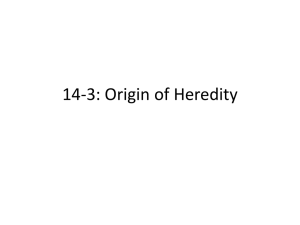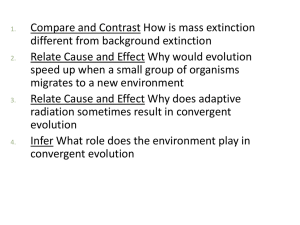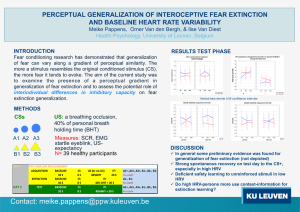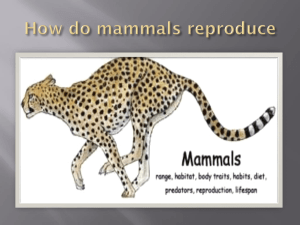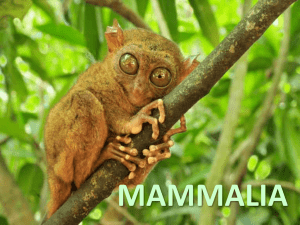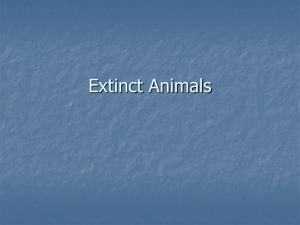Section 17-2
advertisement
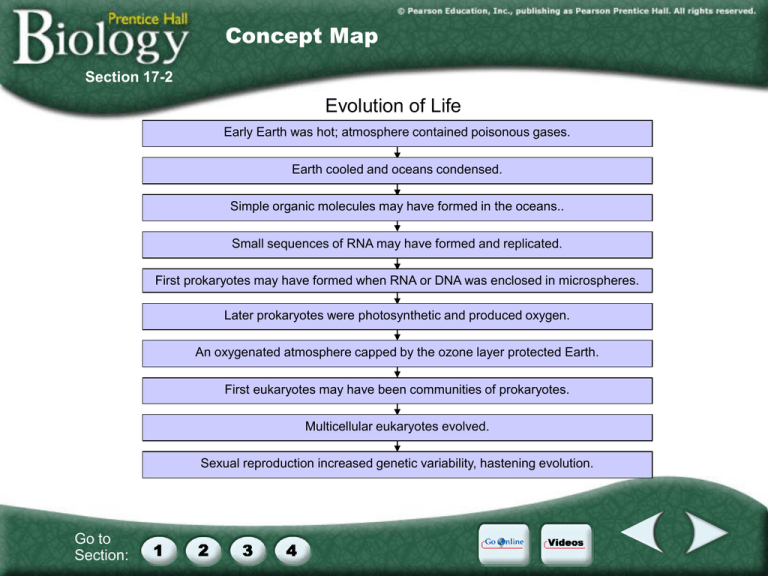
Concept Map Section 17-2 Evolution of Life Early Earth was hot; atmosphere contained poisonous gases. Earth cooled and oceans condensed. Simple organic molecules may have formed in the oceans.. Small sequences of RNA may have formed and replicated. First prokaryotes may have formed when RNA or DNA was enclosed in microspheres. Later prokaryotes were photosynthetic and produced oxygen. An oxygenated atmosphere capped by the ozone layer protected Earth. First eukaryotes may have been communities of prokaryotes. Multicellular eukaryotes evolved. Sexual reproduction increased genetic variability, hastening evolution. Go to Section: Figure 17-8 Miller-Urey Experiment Section 17-2 Mixture of gases simulating atmospheres of early Earth Spark simulating lightning storms Condensation chamber Water vapor Cold water cools chamber, causing droplets to form Liquid containing amino acids and other organic compounds Go to Section: Figure 17-12 Endosymbiotic Theory Section 17-2 Chloroplast Aerobic bacteria Ancient Prokaryotes Nuclear envelope evolving Plants and plantlike protists Photosynthetic bacteria Mitochondrion Primitive Photosynthetic Eukaryote Ancient Anaerobic Prokaryote Go to Section: Primitive Aerobic Eukaryote Animals, fungi, and non-plantlike protists Geologic Time Scale with Key Events Section 17-3 Era Cenozoic Mesozoic Paleozoic Precambrian Time Go to Section: Period Quaternary Tertiary Cretaceous Jurassic Triassic Permian Carboniferous Devonian Silurian Ordovician Cambrian Time (millions of years ago) 1.8–present 65–1.8 145–65 208–145 245–208 290–245 363–290 410–363 440–410 505–440 544–505 650–544 Key Events Glaciations; mammals increased; humans Mammals diversified; grasses Aquatic reptiles diversified; flowering plants; mass extinction Dinosaurs diversified; birds Dinosaurs; small mammals; cone-bearing plants Reptiles diversified; seed plants; mass extinction Reptiles; winged insects diversified; coal swamps Fishes diversified; land vertebrates (primitive amphibians) Land plants; land animals (arthropods) Aquatic arthropods; mollusks; vertebrates (jawless fishes) Marine invertebrates diversified; most animal phyla evolved Anaerobic, then photosynthetic prokaryotes; eukaryotes, then multicellular life Patterns of Evolution Section 17-4 Macroevolution refers to large-scale evolutionary patterns and processes that occur over long periods of time. Includes extinction, adaptive radiation, convergent evolution, coevolution, punctuated equilibrium, and changes in developmental genes. Go to Section: Extinction • More than 99% of all species that have every lived are now extinct. • Occur because species compete for resources and environments change (natural selection). • Mass extinctions wiped out entire ecosytems. Food webs collapsed and disrupted energy flow through the biosphere. – Most mass extinctions caused by several factors. – Large volcanoes erupting, continents moving, sea levels changing. – Leads to burst of evolution as species fill niches. Go to Section: Adaptive Radiation • A single species or a small group of species has evolved, through natural selection and other processes, into diverse forms that live in different ways. – Darwin’s finches – more that a dozen species evolved from a single species. – Dinosaurs – ruled earth for about 150 million years. – Mammals – disappearance of dinosaurs lead to adaptive radiation of mammals. Go to Section: Convergent Evolution • Process in which unrelated organisms come to resemble one another. • Groups of different organisms, such as mammals and dinosaurs, undergo adaptive radiation in different places or at different times but in ecologically similar environments. Face similar environmental pressures. Natural selection molds different body structures into modified forms (arms and legs into wings and flippers). • Analogous structures – look and function similarly but are made up of parts that do not share a common evolutionary history. Go to Section: Coevolution • Organisms that are closely connected to one another by ecological interactions evolve together. – Flowers and pollinators • As evolutionary change in one organism may also be followed by a corresponding change in another organism. • Analogous structures – look and function similarly but are made up of parts that do not share a common evolutionary history. Go to Section: Punctuated Equilibrium • Fossil records show that some organisms evolved gradually over time. • Others are in equilibrium – have changed little over time. • Long, stable periods are interrupted by brief periods of more rapid change – punctuated equilibrium. May occur when – a small population becomes isolated from the main part of the population or a small group migrates to a new environment. – a mass extinction occurs. – Organisms evolve rapidly to fill available niches. Go to Section: Flowchart Section 17-4 Species that are Unrelated form Related in under under in in Interrelationshiops Similar environments Intense environmental pressure Small populations Different environments can undergo can undergo can undergo can undergo can undergo Coevolution Convergent evolution Extinction Punctuated equilibrium Adaptive radiation Go to Section: Videos Click a hyperlink to choose a video. Geologic Time Evolution of Cells Go Online Career links on fossil preparators Interactive test For links on the fossil record, go to www.SciLinks.org and enter the Web Code as follows: cbn-5171. For links on eukaryotic cells, go to www.SciLinks.org and enter the Web Code as follows: cbn-5172. For links on extinction, go to www.SciLinks.org and enter the Web Code as follows: cbn-5174.



